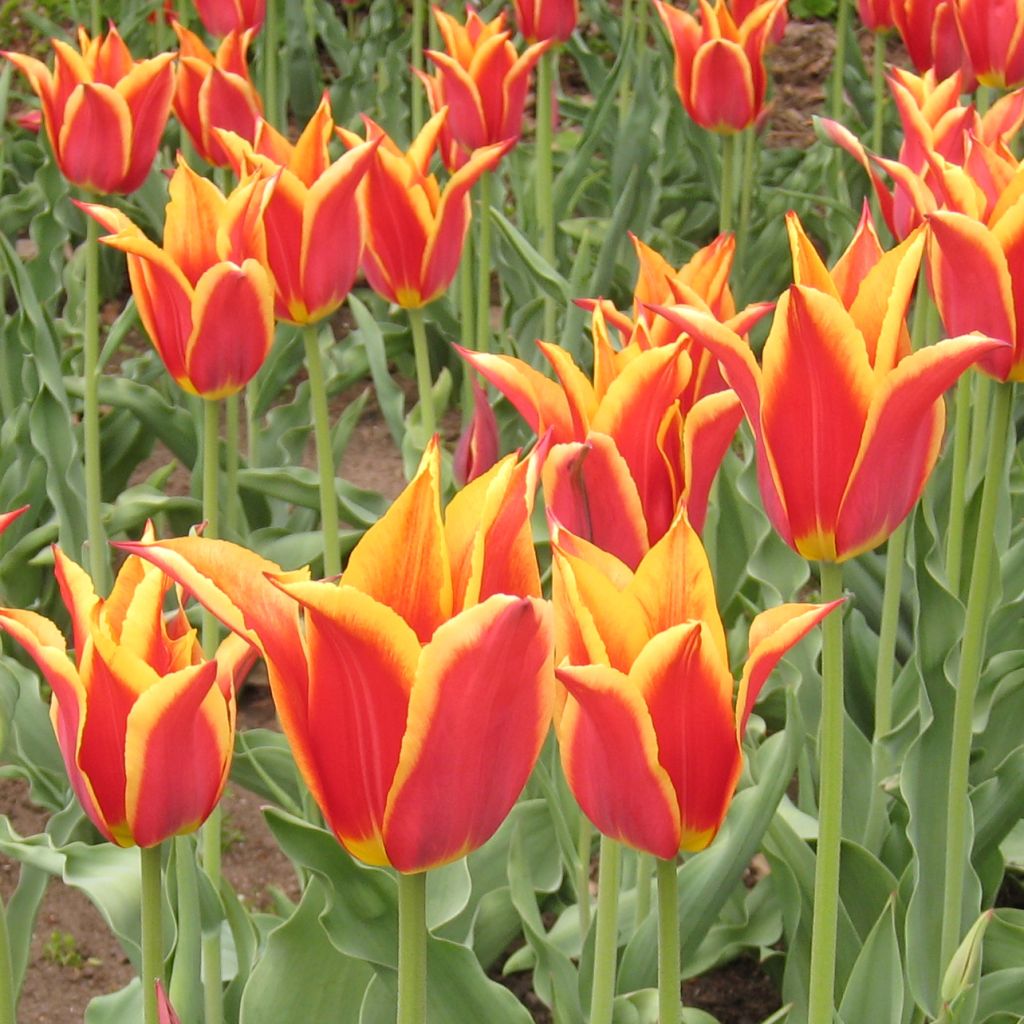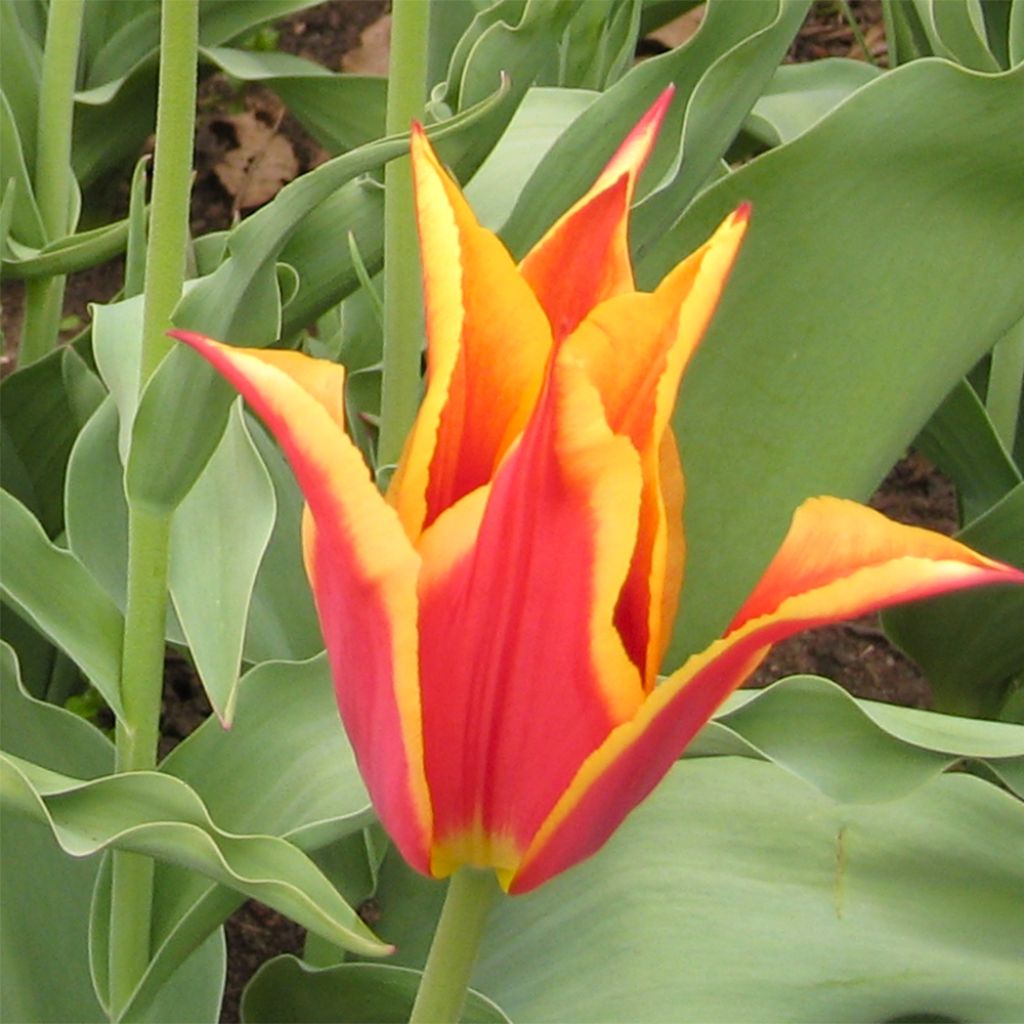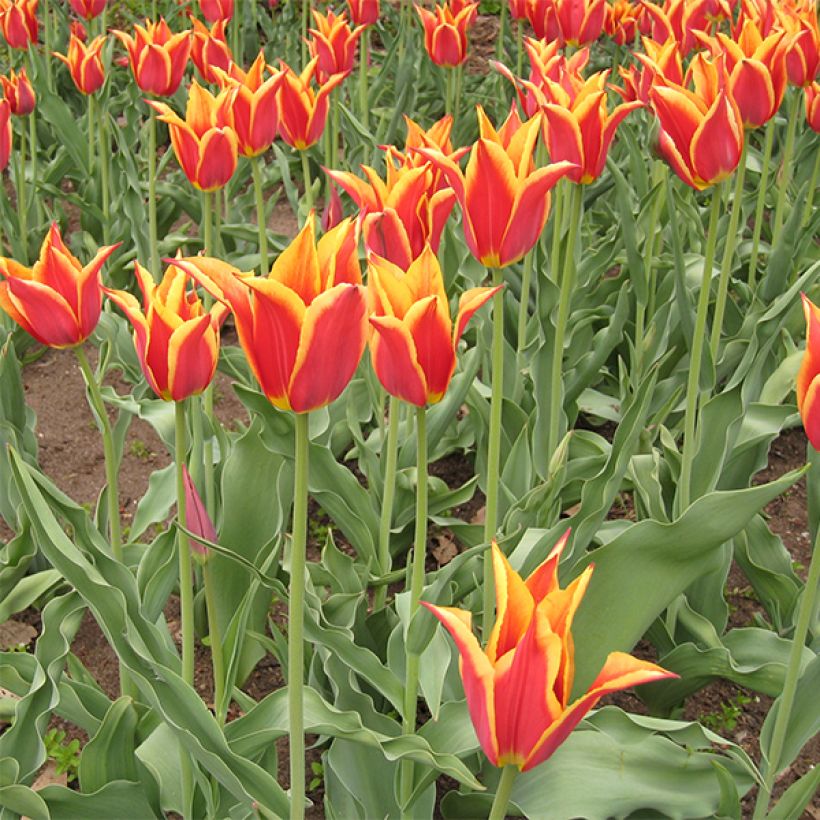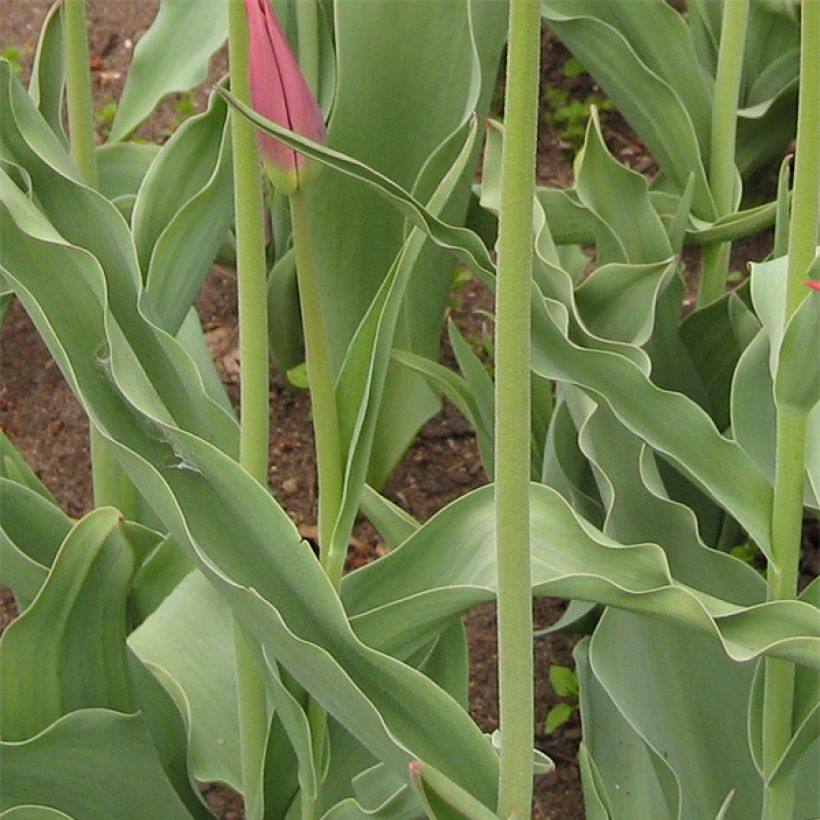

Tulipe Fleur De Lis Synaeda King


Tulipe Fleur De Lis Synaeda King
Tulipa Synaeda King
Tulipa Synaeda King
tulip
I enjoy watching them." Analyse du texte traduit : La traduction est correcte et respecte le sens du texte original. Il n'y a pas de fautes d'orthographe, de grammaire ou de structure. Le ton du texte est conservé.
Nicole Boudard, 06/06/2016
This plant carries a 6 months recovery warranty
More information
We guarantee the quality of our plants for a full growing cycle, and will replace at our expense any plant that fails to recover under normal climatic and planting conditions.
From €5.90 for pickup delivery and €6.90 for home delivery
Express home delivery from €8.90.

Does this plant fit my garden?
Set up your Plantfit profile →
Description
Tulipa 'Synaeda King' is a tulip with real elegance. Its large solitary flowers are burgundy red edged with golden yellow and form perfect cups, with intense satin highlights that enhance the graceful curve of its pointed, slightly recurved petals. For a late tulip, it thrives well in the garden. It is the queen of cut flowers, ideal for creating original bouquets. We need to rediscover these beautiful lily-flowered tulips, which our grandmothers loved but have unfortunately become rare in our gardens.
The 'Synaeda King' lily-flowered tulip belongs to the lily family. It is classified in Division 6 of horticultural tulips, the main characteristics of this category are as follows: they have single flowers in the second half of spring, the cups are narrow, the pointed tepals are recurved at opening and open into an 8 cm (3in) wide star. During the day, these flowers become spider-like and wide open. They were created in the early 20th century. This variety will reach 45 cm (18in) high when in bloom. They flower at the end of April or the beginning of May. The foliage is thinner than that of other tulips. Each solitary flower is supported by stem which looks elegant but is resistant to bad weather.
The 'Synaeda King' lily-flowered tulip showcases red and yellow in a sparkling mix, full of reflections, far from garish. It fits well in large flower beds with its late flowering allowing the maximum duration of flowers. Pair it with Corsican hellebores and euphorbias for stunning compositions. It can also be planted in pots and containers on balconies and terraces. It goes perfectly with perennials and is ideal for creating elegant bouquets.
In a vase, very little water at the bottom is enough! Also, if your tulips open too quickly, you can add two to three ice cubes to the vase every day. Many varieties of lily-flowered tulips are grown for forcing to produce cut flowers for a large part of the year.
Report an error about the product description
Tulipa Synaeda King in pictures




Plant habit
Flowering
Foliage
Botanical data
Tulipa
Synaeda King
Liliaceae
tulip
Cultivar or hybrid
Planting and care
Plant the bulbs in autumn, from September to December, 15 cm (6in) deep and 10 cm (4in) apart in ordinary, slightly acidic, neutral, or slightly alkaline, loose, well-worked, and well-drained soil. Never add poorly decomposed manure or compost to the planting soil, as this could cause the bulbs to rot. 'Synaeda King' will grow well in soil which is moist to dry in summer, in a sunny or semi-shaded location. Once flowering is finished, it is best to remove the seed heads to avoid exhausting the plant.
Planting period
Intended location
Care
-
, onOrder confirmed
Reply from on Promesse de fleurs
Haven't found what you were looking for?
Hardiness is the lowest winter temperature a plant can endure without suffering serious damage or even dying. However, hardiness is affected by location (a sheltered area, such as a patio), protection (winter cover) and soil type (hardiness is improved by well-drained soil).

Photo Sharing Terms & Conditions
In order to encourage gardeners to interact and share their experiences, Promesse de fleurs offers various media enabling content to be uploaded onto its Site - in particular via the ‘Photo sharing’ module.
The User agrees to refrain from:
- Posting any content that is illegal, prejudicial, insulting, racist, inciteful to hatred, revisionist, contrary to public decency, that infringes on privacy or on the privacy rights of third parties, in particular the publicity rights of persons and goods, intellectual property rights, or the right to privacy.
- Submitting content on behalf of a third party;
- Impersonate the identity of a third party and/or publish any personal information about a third party;
In general, the User undertakes to refrain from any unethical behaviour.
All Content (in particular text, comments, files, images, photos, videos, creative works, etc.), which may be subject to property or intellectual property rights, image or other private rights, shall remain the property of the User, subject to the limited rights granted by the terms of the licence granted by Promesse de fleurs as stated below. Users are at liberty to publish or not to publish such Content on the Site, notably via the ‘Photo Sharing’ facility, and accept that this Content shall be made public and freely accessible, notably on the Internet.
Users further acknowledge, undertake to have ,and guarantee that they hold all necessary rights and permissions to publish such material on the Site, in particular with regard to the legislation in force pertaining to any privacy, property, intellectual property, image, or contractual rights, or rights of any other nature. By publishing such Content on the Site, Users acknowledge accepting full liability as publishers of the Content within the meaning of the law, and grant Promesse de fleurs, free of charge, an inclusive, worldwide licence for the said Content for the entire duration of its publication, including all reproduction, representation, up/downloading, displaying, performing, transmission, and storage rights.
Users also grant permission for their name to be linked to the Content and accept that this link may not always be made available.
By engaging in posting material, Users consent to their Content becoming automatically accessible on the Internet, in particular on other sites and/or blogs and/or web pages of the Promesse de fleurs site, including in particular social pages and the Promesse de fleurs catalogue.
Users may secure the removal of entrusted content free of charge by issuing a simple request via our contact form.
The flowering period indicated on our website applies to countries and regions located in USDA zone 8 (France, the United Kingdom, Ireland, the Netherlands, etc.)
It will vary according to where you live:
- In zones 9 to 10 (Italy, Spain, Greece, etc.), flowering will occur about 2 to 4 weeks earlier.
- In zones 6 to 7 (Germany, Poland, Slovenia, and lower mountainous regions), flowering will be delayed by 2 to 3 weeks.
- In zone 5 (Central Europe, Scandinavia), blooming will be delayed by 3 to 5 weeks.
In temperate climates, pruning of spring-flowering shrubs (forsythia, spireas, etc.) should be done just after flowering.
Pruning of summer-flowering shrubs (Indian Lilac, Perovskia, etc.) can be done in winter or spring.
In cold regions as well as with frost-sensitive plants, avoid pruning too early when severe frosts may still occur.
The planting period indicated on our website applies to countries and regions located in USDA zone 8 (France, United Kingdom, Ireland, Netherlands).
It will vary according to where you live:
- In Mediterranean zones (Marseille, Madrid, Milan, etc.), autumn and winter are the best planting periods.
- In continental zones (Strasbourg, Munich, Vienna, etc.), delay planting by 2 to 3 weeks in spring and bring it forward by 2 to 4 weeks in autumn.
- In mountainous regions (the Alps, Pyrenees, Carpathians, etc.), it is best to plant in late spring (May-June) or late summer (August-September).
The harvesting period indicated on our website applies to countries and regions in USDA zone 8 (France, England, Ireland, the Netherlands).
In colder areas (Scandinavia, Poland, Austria...) fruit and vegetable harvests are likely to be delayed by 3-4 weeks.
In warmer areas (Italy, Spain, Greece, etc.), harvesting will probably take place earlier, depending on weather conditions.
The sowing periods indicated on our website apply to countries and regions within USDA Zone 8 (France, UK, Ireland, Netherlands).
In colder areas (Scandinavia, Poland, Austria...), delay any outdoor sowing by 3-4 weeks, or sow under glass.
In warmer climes (Italy, Spain, Greece, etc.), bring outdoor sowing forward by a few weeks.


































